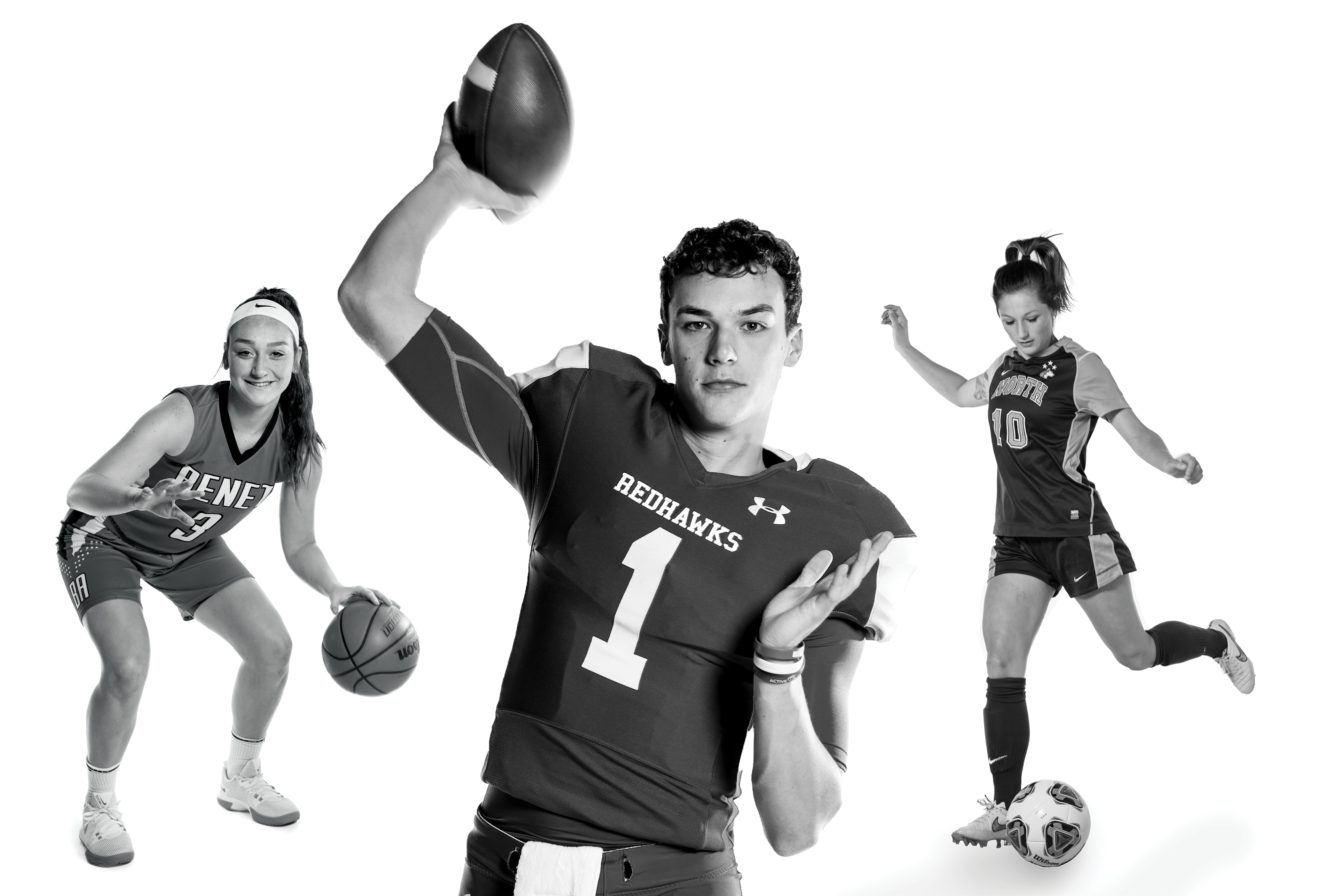Play Time
By Matt Le Cren
May 2018 View more Featured
Three high school athletes making plays on the court and field, as well as for their collegiate future
Brooke Schramek was in seventh grade when she received her inaugural recruiting letter from a college basketball coach. The Naperville resident got her first scholarship offer, from Butler University, the summer before she started high school.
Brooke, now a 6-foot-1 sophomore at Benet Academy, has more than a dozen offers from Division I programs and is one of the most highly recruited female basketball players in Illinois. She is just one of many local high school athletes for whom the recruiting process has started earlier and gotten more intense.
“When I got [the first offer] I was like, ‘Wait, what? This is already happening?’” Brooke recalls. “I was caught off guard, but it felt so unreal and I couldn’t be happier about it.”
For most teenagers in Brooke’s position, the attention is welcome. But for their parents, while despite being grateful that their child will get a large chunk of their college education paid for, it can be a stressful process.
Brooke’s father Jim is no stranger to the recruiting process. His other daughters, Emily and Kendal, are both playing basketball for Midwest Division II universities after each having helped Benet get to a 4A state championship.
But the older girls weren’t recruited until their junior year and the offers came in a trickle, not a flood. In the past, with rare exceptions, junior year was the crucial time for recruiting and most kids made their college decisions as seniors.
“Now the process happens much earlier,” Jim says. “College coaches are recruiting kids before high school. Now with players like Brooke, if you don’t start talking to her freshman year, you might not have a chance by the time she’s a junior, because schools are already recruiting her.”
It can get hectic for kids, but most enjoy the process. “It’s a lot to take in and a lot to comprehend, balancing high school and calling coaches, but I think it’s such a cool experience,” Brooke says. “It hasn’t been that big of a distraction.
“My dad and [AAU coach Mike Seberger] and [Benet coach Joe Kilbride] help me a lot. My dad will be like, ‘Just call this coach tonight if you have time.’ They help me organize stuff and set up visits.”
Parental involvement is crucial to helping an athlete make a decision. Sixteen-year-old Brooke has already visited nine schools with her parents.
“The other thing I’ve learned to ask is, ‘Who is the coach I can trust the most?’” Jim says. “Because every coach is going to tell you what you want to hear. You’ve got to figure out: When my daughter goes on campus, is that coach the same person who recruited her? I’ve seen time and time again where kids are being shown the dog-and-pony show and when they get on campus it’s completely different.
“The other part that I think is very critical, is you have to have a pulse on coaching changes, and that’s what makes it more difficult now. What is the coach’s record, how long has he or she been there, what are the odds of them getting canned or moving up [to another job]? Sometimes you’re playing Russian roulette.”
That’s true in most sports. North Central College football coach Jeff Thorne has an interesting perspective, in that he recruits athletes and is the parent of a star football player (see sidebar). His son Payton was the quarterback who took Naperville Central to the state quarterfinals last fall as a junior.
“That’s a great question: Who can you trust? Because you don’t have to look very far to see coaches leaving institutions after a year for a better job,” Jeff says. “I’m not suggesting it is wrong for anybody to look for a better job. The problem is the athletes are the ones who are stuck holding the bag.
“So many kids, whether society likes it or not, are choosing institutions in large part because of the coaches—not so much the academics—and they kind of have that backward. Especially at the smaller school level, you’ve got to make sure you’re finding the right fit academically, and then make sure the other ducks fall in a row as far as liking the coaching staff and the athletic program.”
Payton has six Division I offers so far, including one from Western Michigan, and he wants to make his decision by the fall. He says it’s gratifying to feel wanted.
“I got my first letter freshman year,” Payton says. “Being recruited is definitely something that feels good. You know you’ve worked to get to that point, so being recruited is what a lot of people like.”
While many athletes spend months and even years pondering their decisions, others make them quickly.
Katelynn Buescher, a senior midfielder on Naperville North’s girls soccer team, committed to University of Illinois at Urbana/Champaign in March of her sophomore year.
“I’m friends with a lot of older people [who have been through the recruiting process], so I knew that I had to get into that field a little bit early,” Katelynn says. “So I started sending emails out my freshman year. They can’t email you back, so you just let them know where you’ll be playing and then you send out follow-up emails that say things like, ‘Thank you so much for coming.’ You continue to show them that you’re interested.”
While an athlete can give verbal commitments at any time, that decision doesn’t become binding until he or she signs a national letter of intent during senior year. Until that happens, athletes can decommit, or a university can withdraw the scholarship offer, for any reason.
But Katelynn is happy she committed early. “I have no regrets,” she says. “I didn’t want to get into junior or senior year when [the scholarships] are all taken and not have different opportunities. I knew I wanted to go to Illinois. I didn’t want where I could play to determine where I went to college.”



